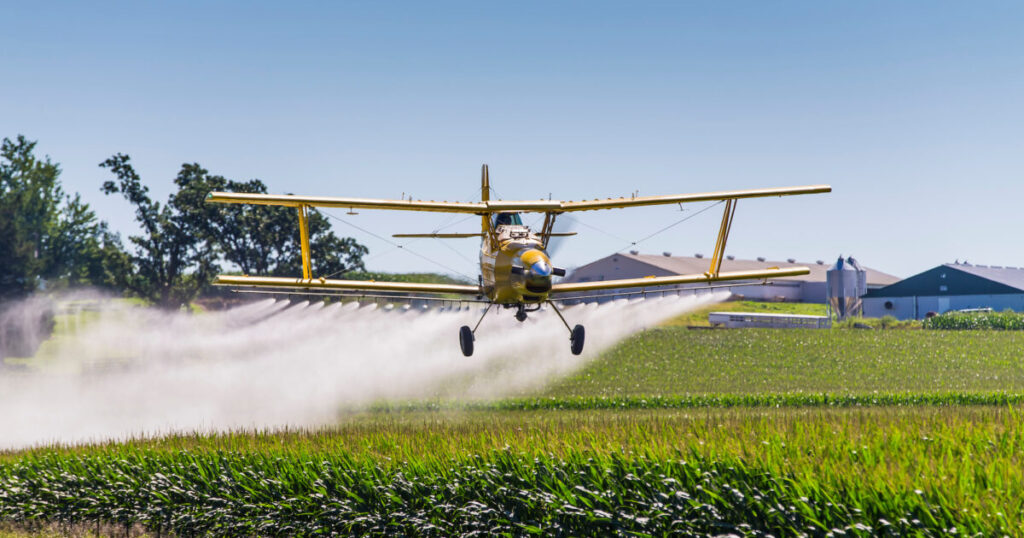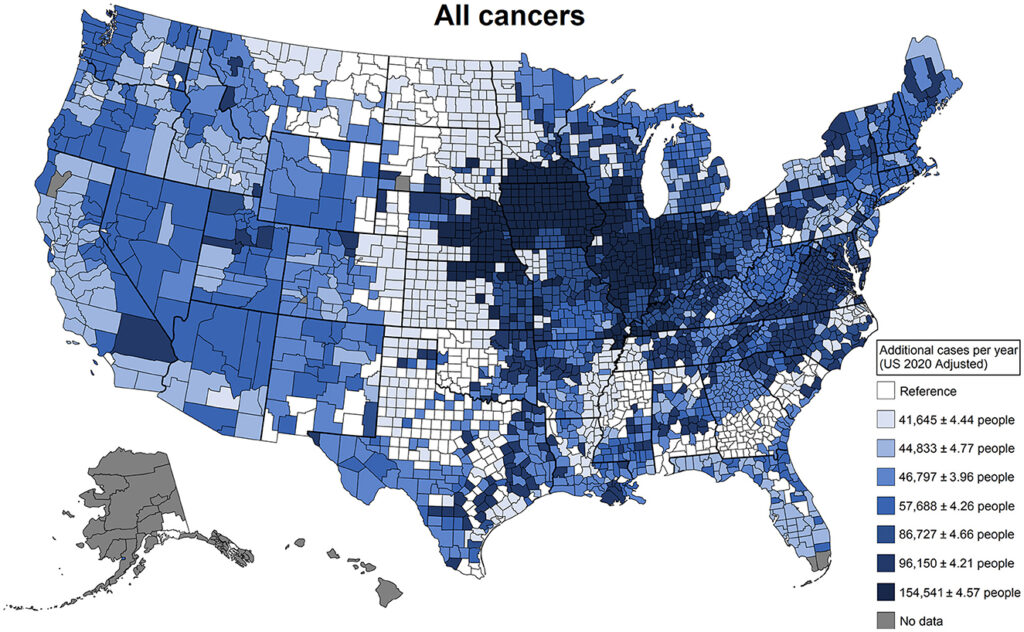Farming communities across the United States have disproportionately high rates of cancer. According to the U.S. Centers for Disease Control and Prevention (CDC), cancer rates in the country can exceed those of cities, especially for cancers linked to environmental exposures. That’s true from the Midwest to the Great Plains to California’s Central Valley.
In America’s urban areas, pollution from automotive tailpipes and heavy industry is easy to blame because it’s easy to see. What’s happening in the country, especially in the nation’s farming communities, is less visible but still noticeable – at least if you look at the data and talk to some of the people who live there.
Today, many farmers and their families live where synthetic pesticides and herbicides are used regularly and extensively. Over time, this exposure can have serious health consequences. The same chemicals that protect crops from insects, fungi, and weeds are toxic to humans, especially when the exposure occurs over a long period of time.
Typically, farmers are exposed to agricultural chemicals through skin contact, inhalation, or even accidental ingestion. Family and community members who don’t till, plant, or harvest are also exposed to pesticides and herbicides, often through contaminated water, air, and dust. Tragically, certain cancers linked to environmental exposure are especially prevalent in farming communities.
- Non-Hodgkin Lymphoma
- Leukemia
- Prostate Cancer
- Multiple Myeloma
- Breast and Ovarian Cancer
Scientists and healthcare professionals who study the links between chemicals and cancer have focused on three key substances: glyphosate, atrazine, and organophosphates. It’s also important to note that DDT, a synthetic insecticide, is banned in the United States but still used in the tropics, which provide American consumers with fruits and other foods (especially during the winter, when local supplies are unavailable). DDT breaks down into DDE, a chemical compound that mimics estrogen, can occupy receptor sites on memory tissue, and may cause breast cancer.
Glyphosate, the active ingredient in the popular herbicide Roundup, was classified as “probably carcinogenic to humans” by the Agency for Research on Cancer (IARC) back in 2015. Regulatory agencies may disagree with this assessment, but lawsuits have been filed on behalf of farmworkers who developed non-Hodgkin lymphoma after prolonged exposure to glyphosate.
Atrazine, an herbicide that’s used primarily on corn, has been shown to disrupt endocrine function and is associated with increased risk of breast and prostate cancers. Atrazine has been found in drinking water in agricultural regions, and that raises concerns about the long-term health effects on local populations.
Organophosphates, a popular class of insecticides, are neurotoxins that may cause leukemia and lymphoma. Farmers who regularly apply these chemicals without adequate protective gear are especially at risk, but so are their families – and all of us. You may not live in a farm or a farming community yourself, but the food you by at the store may have been treated with these substances. And no matter where you live, toxins are present in the environment.
Is it time to make America’s farming communities healthy again?

